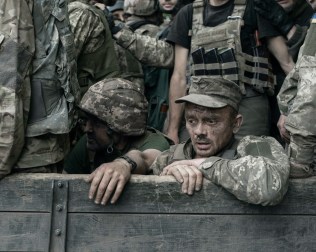
The renowned photography competition has entered its 43rd edition. Once again, the excitement surrounding who will be honoured at a ceremony in Wetzlar on October 12, within the framework of a grand Celebration of Photography, is palpable. For over four decades, the LOBA has stood for impressive photography that – as stated in the competition’s preamble – expresses in particular “the relationship between people and their environment”. This year, the nominated series are, once again, powerful and emotionally moving reflections of the world today. In this second episode, we are introducing a further six series from the LOBA 2023 shortlist.
––
Johanna-Maria Fritz: A Grave in the Garden
The Russian invasion of Ukraine began on February 24, 2022. Two days later the German photographer began her documentary work in the embattled areas. She has captured the reality and consequences of a conflict that is as senseless as it is tragic. Her impressive reportage offers direct insight into the everyday lives of a people constantly fighting to survive. “Through my work, I’ve learnt that the reality of war is often different to what you might imagine,” the photographer explains. “I’ve also learnt that listening and asking questions is of decisive importance, to uncover the truth and understand people’s stories.” Fritz was born in 1994 and is a member of the Ostkreuz Agency.
––
Ziyi Le: New Comer
The Chinese photographer posted the idea for his project on Weibo, a Twitter-like portal for short messages in China, and found people interested in his sensitive portrait series. “Throughout my growing up years, I spent little time with my parents,” he remembers. “We communicated little and were estranged for a long time, which made me feel like I was in the middle of nowhere.” Existential fears, questions about the future, and the search for identity are things occupying the minds of a whole generation of young Chinese. Born in Fujian in 1993, Le has found photography as a way to bring these issues into the open and give them visibility, perhaps even start a dialogue about them. The outcome is a touching portrait of the New Comer, a generation in search of personal development and its place in society.
––
Edu León: Unearth the Memory
Let us not forget: this is the message the Spanish photographer wants to convey. Born in Madrid in 1977, León has been living in Latin America for over ten years. For his series, he took pictures in the most severely impacted areas of armed conflict in Colombia: Buenaventura, La Ciénaga and El Salado, where he placed his focus on the women affected by tragedy: “It was a process of spending time with them, talking, looking at photos from their past and telling me about the open wounds from what they went through in their forced displacement and the massacres that occurred with relatives and neighbors,” León explains. He developed motifs with his protagonists, which served as a way to deal with their memories. The images reflect their pain, but also their hope for a more peaceful future in a country marked by violence.
––
Rania Matar: Fifty Years Later
Lebanon is still suffering from the consequences of the civil war that began 50 years ago. After brutal clashes, corrupt governments and month-long lockdowns during the Corona pandemic, the 2020 explosions in Beirut’s port plunged the country even further into the abyss. The Lebanese-American photographer’s series is dedicated to the young women there: pictures reflecting their presence, creativity, strength, dignity and resilience are representative of the hopes, dreams and fears of a whole generation. The project is very personal for the photographer, who was born in 1964. “I see my younger self in these women, I feel their hopes, pains, dreams and fears,” she says. “I was their age when I left Lebanon in 1984 during the civil war.”
––
Seamus Murphy: Kingdom
The Irish photographer has lived in Great Britain for over 35 years. He appreciates British courtesy paired with anarchic eccentricity. Since the 2016 referendum, when the United Kingdom decided to withdraw from the European Union, he has been documenting the changes he has become aware of following Brexit. Born in 1959, the photographer does not look exclusively to big events that promise a striking yield: “The remarkable thing is that you can take interesting photos at a banal event, and come home with boring photos from an interesting one,” he comments. Consequently, a series full of bitter irony, empathy and criticism of social and societal conditions has been emerging since 2016.
––
Jordi Ruiz Cirera: On This Side There Are Dreams, Too
The starting point for the series was daily life for people along Mexico’s northern border, which stretches over 3000 kilometres, from Tijuana on the Pacific to the Gulf of Mexico. The region mostly makes headlines, when there are reports of violence and migration conflicts. Born in Barcelona in 1984, the photographer and film maker’s gentle series turns the focus instead on hopes and dreams, mundane occurrences and the unique landscape. On the whole, the pictures show individuals because, as the photographer says, “The motif of loneliness is quite present: I wanted the work to show the invisible tension I often felt, the distances, the disconnection and the isolation that I perceived in the region.”
––
All the series with additional information can be found at the LOBA website. The complete collection of shortlist series will be introduced on the website, over the weeks leading up to the award ceremony on October 12, 2023 in Wetzlar. That event will also see the opening of a large exhibition at the Ernst Leitz Museum, which will be complemented by a comprehensive catalogue.




































